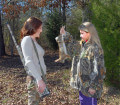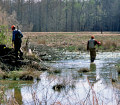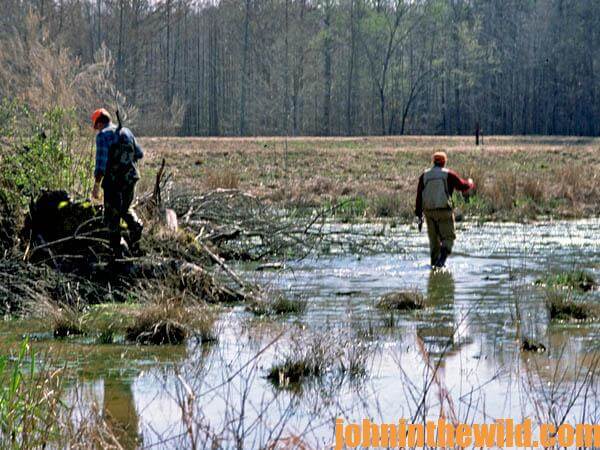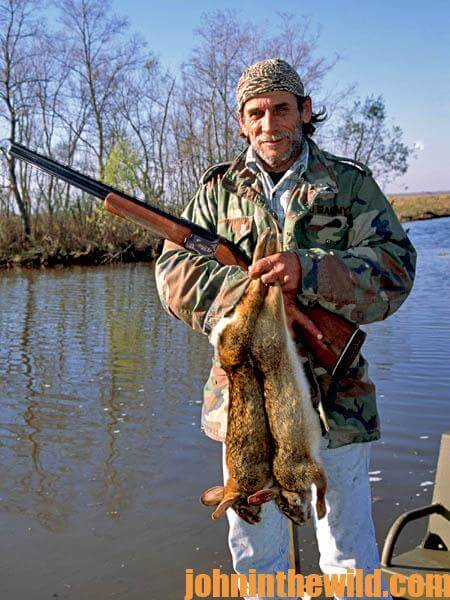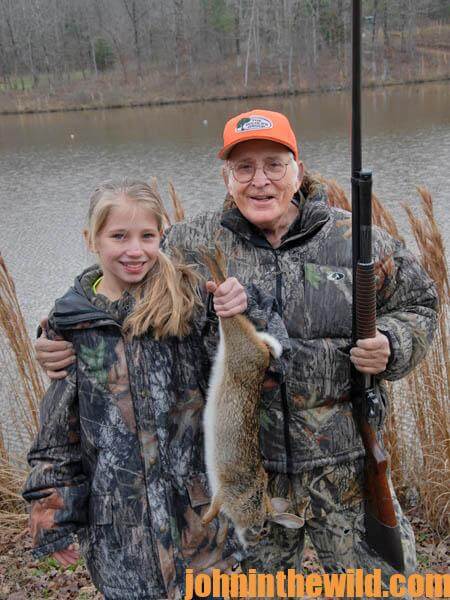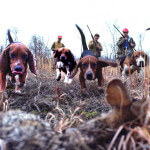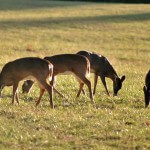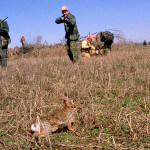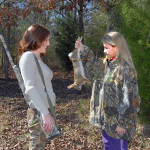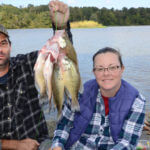John’s Note: Now’s the time in February that outdoorsmen particularly enjoy hunting rabbits, especially with their families, neighbors and friends. Rabbits, like all other wild species, must have a combination of ample food and proper cover to survive. If an area loses either one, bunnies just can’t flourish. Throughout much of the nation, farming practices have changed. The small-plot family farm generally either has been abandoned or replaced with big-field farms, which are not conducive to rabbit hunting. So, where can a fellow go to find a mess of bunnies? The answer’s quite simple: anywhere you find an abundant food source and cover to protect the rabbits. Let’s see if we can define some rabbit-food hot spots and learn how to hunt them.
At times we no longer seem to know what normal weather conditions include, due to some of the unusual weather the country has had in recent years, including the extremes of drought and floods.
Either condition is bad for rabbits as well as people. When a flood occurs, people who live along the flood plain must move out of their houses, go to higher ground and find another way to earn a living in another place. Although rabbits spend most of their lives within 1/2-acre of land, when that land becomes water, like the people who live on the flood plain, the rabbits also have to move to survive. Therefore, any high-ground place you pinpoint during flooded conditions, that also has food and cover, probably will home a large number of rabbits.
Some years ago, the U.S. Army Corps of Engineers cleared-out a woodlot I hunted every year on the edge of the Tombigbee River that flowed through west/central Alabama and made it into a spoilage dump. The engineers dug-up this 150- to 200-acre plot and built a dike around it. Then the Corps pumped the material dredged-up from the Tombigbee River into this spoilage area while building the Tenn-Tom Waterway. Each year dredging this region usually took place in the early spring. Briars and grass filled this dike spoilage area by late summer and early fall, making it ideal habitat for both rabbit and deer. When the river flooded, you couldn’t reach the spoilage area, except by boat or canoe. However, because this place had a high bank all around it to keep the dredged material in, it also kept the water out. Then when flood waters came, this eyesore became a deer and rabbit hot spot, because of the abundant food in the spoilage area. All along major river systems throughout the country, you’ll find these spoilage areas. Although the dikes holding sediment from the bottom of the river are eyesores, once the grass and briars begin to grow in these sites, they offer a smorgasbord for cottontails and swamp rabbits and a honey hole for the rabbit hunter.
Go to the Grass:
Some hayfields and pastures make ideal feeding areas for rabbits. However, you have to know what type of hay has been planted to determine whether or not the edges of these fields will make productive places to find bunnies. A hayfield or a pasture planted in fescue means you may have a rabbit black hole instead of a rabbit honey hole. According to wildlife biologist, Keith Guyes of Montgomery, Alabama, “Fescue contains a fungus that attacks the digestive system of rabbits and gives them diarrhea. Although eating this particular food doesn’t result in major rabbit die-offs, it can severely reduce the number of rabbits on the edges of fescue fields. Fescue also has a similar effect on cattle. Scientists have experimented with different strains of fescue to try and breed a fungus-free strain of fescue.” Find green winter pastures and hayfields not cut until the late fall if you want to locate bunnies. During the daylight hours, the rabbits most often will hole-up on the edges of these fields or within 200 to 250 yards of these fields and move into the fields at night to feed. You may enjoy some of your best rabbit hunting early in the morning and late in the evening when rabbits move.
If you have beagles, hunt the edges of these fields. Early in the morning the rabbits’ scent will be fresh just after they’ve left the fields before daylight and late in the afternoons as they come to the fields. If you have a good pack of beagles, often you’ll have two or three bunny runs going on at the same time as the rabbits congregate to feed on the greenery. Since much of the South particularly hasn’t experienced very-cold weather in recent years during the fall and winter, often these green fields offer highly-productive rabbit hunting throughout much of the fall and the winter.
Hunt Cane Thickets and Palmetto Swamps:
If you hunt in low-lying areas and swampy terrain, many times you can find Goliath-sized rabbits in the canes and the palmettos. This type of habitat homes big swamp rabbits not cottontails. Swamp bunnies tend to like the tender shoots of the canes and grasses that grow in wetlands, and the thick cover of the palmettos and the cane provides an ideal home for these very-large rabbits. But when you hunt swamp bunnies, you better pack your lunch. Swamp rabbits run in much wider circles than cottontails do. Most of the swamp rabbits I’ve encountered have earned at least a master’s degree and some even have their PhDs in dog-dodging. Rabbits in swamps will hit the water in a heartbeat and swim upstream, downstream or across a pond quicker than a raccoon will. “I know most people won’t believe this, but when a swamp rabbit crosses water, it tends to leave an oily or sweaty film on the water that contains the rabbit’s scent,” longtime avid rabbit hunter Mel Stewart said. “A dog that comes from quality breeding with a good nose can follow that scent across water and keep the race going. If you have dogs that hunt around water frequently, they’ll also amass a wealth of rabbit savvy. They’ll know where to look for a rabbit if it hits water. Even if the rabbit throws the dogs off the trail for a few minutes, sooner or later they’ll pick up the trail again and keep the bunny coming to you.”
To take more rabbits this year than you have in the past, think about a rabbit’s stomach. If you know what goes in the rabbit’s stomach and where to find that food, you’ll locate numbers of bunnies to hunt during the late winter.
For delicious recipes for preparing rabbits and other wild game with our family’s recipes from the past 45+ years in the outdoors, get John and Denise Phillips’ new eBook “The Best Wild Game & Seafood Cookbook Ever: 350 Southern Recipes for Deer, Turkey, Fish, Seafood, Small Game and Birds.” “Click here to get this book.”
About the Author
John Phillips, winner of the 2012 Homer Circle Fishing Award for outstanding fishing writer by the American Sportfishing Association (AMA) and the Professional Outdoor Media Association (POMA), the 2008 Crossbow Communicator of the year and the 2007 Legendary Communicator chosen for induction into the National Fresh Water Hall of Fame, is a freelance writer (over 6,000 magazine articles for about 100 magazines and several thousand newspaper columns published), magazine editor, photographer for print media as well as industry catalogues (over 25,000 photos published), lecturer, outdoor consultant, marketing consultant, book author and daily internet content provider with an overview of the outdoors. “Click here for more information and a list of all the books available from John E. Phillips.”

